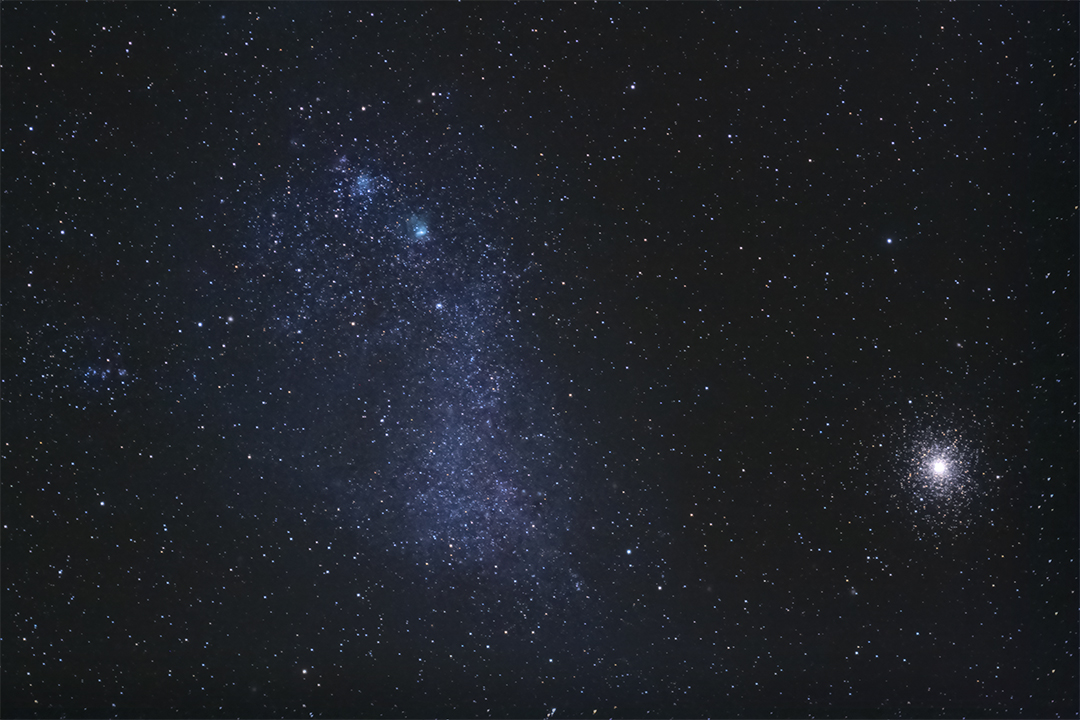|
|
Acquisition |
Processing |
Comments |
|
Date: 17/10/2020 |
PhotoShop |
Name: The Small Magellanic Cloud & Tuc 47
The Small Magellanic Cloud (SMC), or Nubecula Minor, is a dwarf galaxy near the Milky Way. Classified as a dwarf irregular galaxy, the SMC has a diameter of about 7,000 light years, contains several hundred million stars, and has a total mass of approximately 7 billion solar masses. The SMC contains a central bar structure, and astronomers speculate that it was once a barred spiral galaxy that was disrupted by the Milky Way to become somewhat irregular. At a distance of about 200,000 light years, the SMC is among the nearest intergalactic neighbors of the Milky Way and is one of the most distant objects visible to the naked eye.
The SMC is visible from the entire Southern Hemisphere, but can be fully glimpsed low above the southern horizon from latitudes south of about 15 Degrees north. The galaxy is located across both the constellations of Tucana and part of Hydrus, appearing as a faint hazy patch resembling a detached piece of the Milky Way. The SMC has an average apparent diameter of about 4.2 degrees (8 times the Moon's) and thus covers an area of about 14 square degrees (70 times the Moon's). Since its surface brightness is very low, this deep-sky object is best seen on clear moonless nights and away from city lights. The SMC forms a pair with the Large Magellanic Cloud (LMC), which lies 20 degrees to the east, and like the LMC, is a member of the Local Group and highly probably is a former satellite of the Large Magellanic Cloud and a current satellite of the Milky Way.
|
|
Location: Watson's Way |
Levels, Colour Balance, Curves, Saturation Scaling, jpeg Conversion
|
|
|
Camera: Canon 40D |
||
|
Optics: RedCat 51 250mm 4.9L |
||
|
Exposure: 1600 ASA @ xx Min xx Secs |
||
|
Total Exposure: x (xMin xxSec) |
||
|
Guiding: |
||
|
Filter: : |
||
|
Focus: : Manual |
